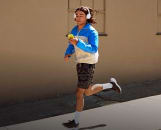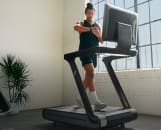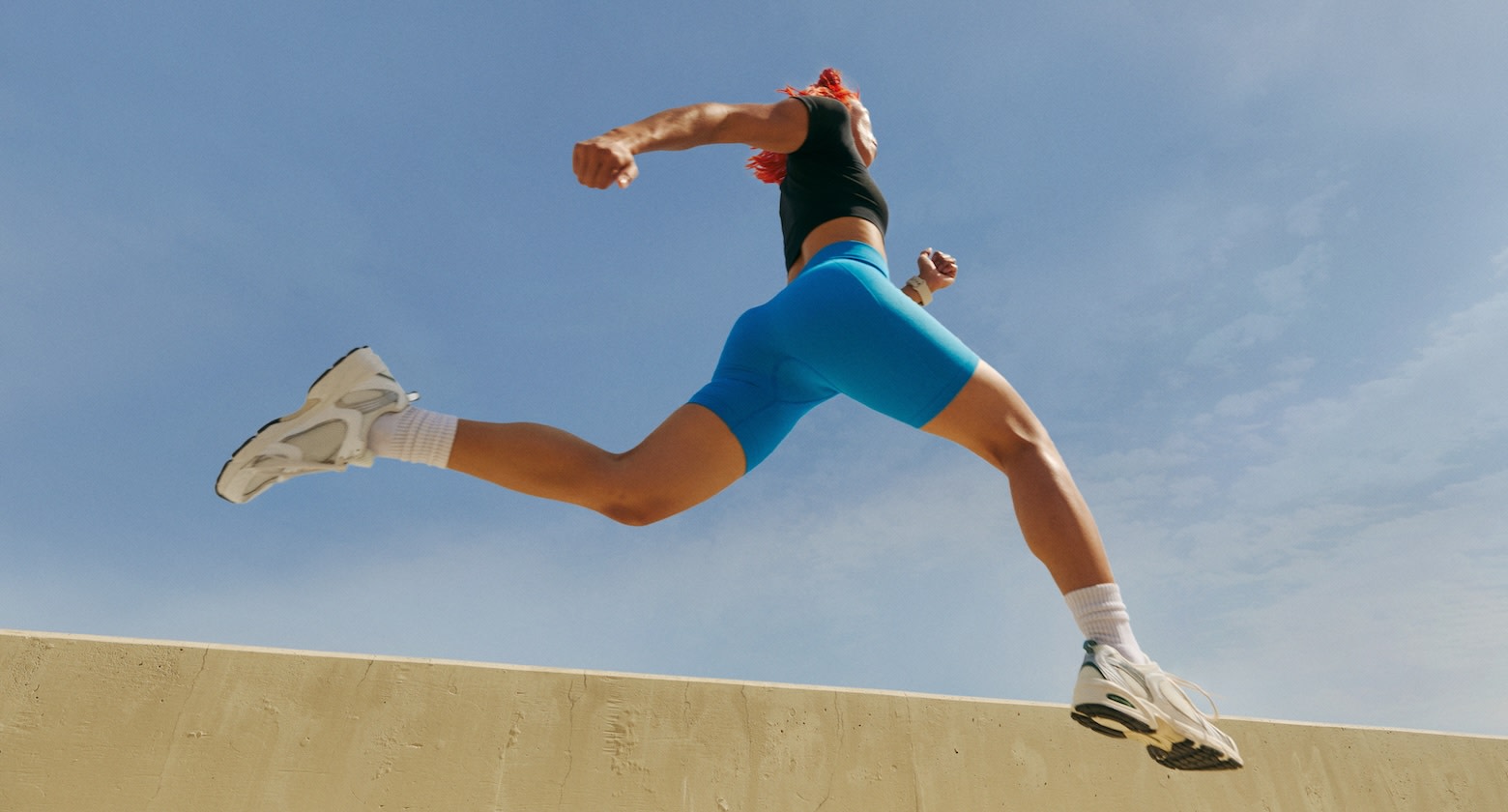
Westend61 / Westend61 via Getty Images
Are Some Workouts More Beneficial Than Others at Lowering Your Cholesterol?
Consistent, moderate-intensity cardio can improve your protective HDL. Here are some of the best workout ideas to try.
By Sarah Klein•
What Is Cholesterol, Again?
How Does Exercise Lower Cholesterol?
Are Certain Workouts More Beneficial for Cholesterol Than Others?
How Much Exercise Is Needed to Improve Cholesterol?
How Long Will It Take for Exercise to Lower Cholesterol?
More Ways to Lower Your Cholesterol
The Takeaway
Learning you have high cholesterol can be a little alarming. It increases your risk for heart disease, heart attacks, and strokes, according to the Centers for Disease Control and Prevention (CDC). It might leave you wondering what you can do to get your levels back into a healthy range, especially if you’d like to try to avoid taking cholesterol-lowering medications. One question that could be on your mind: Does exercise lower cholesterol?
Turns out, it does. “Exercise absolutely lowers cholesterol, as it makes us a more effective machine,” says Melissa Tracy, MD, cardiologist and medical director of cardiac rehabilitation at Rush University Medical Center.
And there’s even better news: It doesn’t even have to be vigorous, high-intensity exercise to make a difference. Keep reading to find out how you can use exercise to help lower your cholesterol, the best workouts to try, and how long it will take for you to see results.
What Is Cholesterol, Again?
First, a little physiology refresher: Cholesterol is a waxy substance that your body needs to make hormones, build cells, and more. There are two types of cholesterol: One, called low-density lipoprotein, or LDL, is considered “bad” cholesterol because it can clog your arteries. That buildup in your arteries is what contributes to your risk for a heart attack or a stroke, according to the American Heart Association (AHA). The other, high-density lipoprotein, or HDL, is considered “good” cholesterol. It doesn’t build up in the arteries, and it actually helps carry some LDL away, per the AHA.
When you get your cholesterol levels tested at the doctor, your results are often called a lipid panel or lipid profile. You’ll usually get four numbers, all measured in milligrams per deciliter of blood, or mg/dL:
Total cholesterol
HDL
LDL
Triglycerides, which are a type of fat in the body, per the AHA
While optimal cholesterol levels vary from person to person and should be discussed with your doctor, healthy ranges generally look like the following for anyone age 20 or older, according to the National Library of Medicine (NLM):
Total cholesterol: Less than 200 mg/dL
LDL: Less than 100 mg/dL
HDL: 40 mg/dL or higher for men, 50 mg/dL or higher for women (but 60 mg/dL or higher is best for everyone)
Triglycerides: Less than 150 mg/dL
Fortunately, there’s many things you can do to help keep your cholesterol levels healthy—one of which includes working out.
How Does Exercise Lower Cholesterol?
“Exercise actually does a lot, because it lowers the LDL cholesterol, but it also raises the HDL cholesterol, so it gives you kind of a one-two punch that way,” says Daron Gersch, MD, a family physician with CentraCare Hospital in Long Prairie, Minnesota, and the vice speaker of the American Academy of Family Physicians. “And the reason why increasing the good cholesterol is such a big deal is that we have no medicine that will increase the good cholesterol. We only have medicines that lower the bad cholesterol. So exercise can actually do something for you that no medicine can.”
Experts don’t know exactly how exercise improves cholesterol, and it may be a combination of factors. For example, Dr. Gersch says, the more you exercise, the more lean muscle mass and the less body fat you’re likely to have. “Muscle mass tends to catalyze more fat, and there’s some thought that that switch of the percentage of lean muscle mass to fat mass might have something to do with it,” he says. In other words, you’d be burning more fat (instead of carbs) and therefore have less fat and “bad” cholesterol circulating in your blood, per a 2023 review in the International Journal of Molecular Sciences.
Are Certain Workouts More Beneficial for Cholesterol Than Others?
Cardio reigns supreme. Increasing your heart rate and improving your cardiovascular health helps lower blood pressure and inflammation and increase muscle mass, all of which are linked with lower cholesterol, Dr. Tracy says.
Get Your Heart Pumping with a Motivating Workout Class
See all classesResistance training, which, of course, has many of its own benefits, doesn’t get your heart pumping in the same way. In older research that compared cholesterol levels in people with metabolic syndrome who did 10 weeks of cardio versus 10 weeks of strength training, only the cardio group experienced a 13 percent increase in their HDL cholesterol (remember, that’s the “good” kind). Neither group experienced changes in their total cholesterol, LDL, or triglycerides. That said, it’s possible resistance training in addition to cardio workouts could have a cumulative effect, according to a 2013 review article in Sports Medicine.
The more cardio you do, the more it benefits your cholesterol, according to the Sports Medicine article, but “it does not have to be very strenuous exercise,” Dr. Gersch says. In fact, “high-intensity exercise has been shown to be no more effective than moderate-intensity exercise” at lowering cholesterol, per the Sports Medicine review.
As long as it’s moderate-intensity cardio exercise (more on that below), pretty much any type of activity you enjoy and you’ll stick with can play a part in lowering cholesterol, Dr. Gersch says. “A lot of people can’t say, ‘OK, I’m going to ride my bike four times a week for the rest of my life.’ That's pretty daunting,” he says. “Find different activities: Maybe one day go for a walk, another day ride your bike, another day play basketball with your children. If you can mix it up that way, that often makes it a lot easier to reach that consistency.”
Swimming, pickleball, dancing, tennis, cycling, jogging, rowing, and walking are all great examples of cardio workouts you can try. “It can be any form of aerobic exercise that [you] enjoy doing, rather than being forced to do something [you] don't necessarily enjoy,” Dr. Tracy says.
How Much Exercise Is Needed to Improve Cholesterol?
Even though more cardio is better for cholesterol, “consistency is key,” Dr. Gersch says. Ideally, you’d meet the Physical Activity Guidelines for Americans, which recommend at least 150 minutes of moderate-intensity aerobic exercise a week.
Moderate-intensity exercise means more than a stroll but not as intense as a full-out sprint: “You’re increasing your heart rate or your rate of perceived exertion to a moderate level, where it’s more difficult to breathe,” Dr. Tracy says. “You feel your muscles warming up, and you’re starting to break a sweat.”
You can break down those 150 minutes into five 30-minute workouts a week. Sustaining that moderate effort for 30 (or more) minutes is where you’ll see the most benefits, Dr. Tracy says. But if you simply don’t have time for a 30-minute workout during a busy day, 10 or 15 minutes at a time, a few times a day, is still better than nothing, she says. (Just make sure those short bursts of activity still get your heart rate up, Dr. Tracy adds: Rather than take a casual stroll around your office, for example, power walk up and down the stairs for 10 minutes between meetings.)
That said, if you’re new to exercise, ramp up to that 150-minute benchmark gradually. “If you’re inactive, we usually recommend that you start slower, and maybe shoot for five or 10 minutes at a time,” Dr. Gersch says. “As your body gets used to it, slowly build your way up to where you can get to that 30 minutes of activity, four to six times a week.”

Maskot / DigitalVision via Getty Images
How Long Will It Take for Exercise to Lower Cholesterol?
You can’t take an indoor cycling class today, get your cholesterol tested tomorrow, and expect to see dramatic results. But you’re likely to notice improvements within a few months: especially if your cholesterol was high to begin with. “You can start seeing a change in your cholesterol in as short as eight weeks,” Dr. Gersch says. (It’s worth noting, however, that compared to HDL cholesterol, improvements in LDL cholesterol may not be as drastic, and might require higher-intensity exercise, per a 2021 review article in Hypertension.)
Most healthy adults should get their cholesterol tested every four to six years until age 40 or so, when you might need more frequent testing, according to the AHA. Depending on your risk factors for heart problems, your doctor might want to screen you more frequently even before 40. Regular cholesterol testing is important because high cholesterol doesn’t usually have any symptoms, so you might not notice any warning signs you’d want to talk to your doctor about.
All that to say: You might not need your cholesterol tested for some time after adopting an exercise routine. That longer time frame between cholesterol tests means you might see an even bigger improvement if you keep up with your fitness routine between appointments.
More Ways to Lower Your Cholesterol
Exercise alone typically won’t lower high cholesterol into a healthy range. Alongside a regular fitness routine, it’s also important to eat a heart-healthy diet. Dr. Gersch suggests:
Limiting saturated fats like those found in full-fat dairy and red meat
Choosing lean proteins like chicken and fish or plant-based proteins like tofu and lentils
Choosing healthier fats like those found in nuts, avocados, and fish
Limiting deep-fried foods and processed meats
Eating plenty of fruits and veggies
And even though it’s easier said than done, it’s also important to quit smoking. Smoking lowers your protective HDL cholesterol, and quitting improves it, Dr. Tracy says—and this happens in just a few weeks after breaking the habit, according to a 2013 meta-analysis in Biomarker Research.
Losing excess weight can also help lower LDL, as can managing stress, according to the NLM. It’s probably a good idea to cut back on alcohol, too, Dr. Tracy says. While a little bit of alcohol is linked with healthy HDL levels, too much (aka more than one to two drinks a day, depending on your age and sex) can raise cholesterol levels and triglycerides, per the CDC.
If changing your habits doesn’t have a big enough effect on your cholesterol, your doctor might want you to try medications, such as statins, to lower your LDL. High cholesterol can also be genetic, and certain types of high cholesterol that run in families can be really hard to manage with lifestyle changes alone, per the NLM.
The Takeaway
Consistent, moderate-intensity cardio exercise can decrease your “bad” LDL cholesterol and increase your “good” HDL cholesterol, which helps support healthy overall cholesterol levels. While it’s not entirely understood how exercise improves cholesterol, it’s thought that having less body fat and more lean muscle may be involved. Aim to get at least five 30-minute cardio workouts in a week, and consider supplementing that with some strength training for even bigger benefits.
Make sure to eat a heart-healthy diet and quit smoking if you’re concerned about high cholesterol, too. Talk to your doctor about how often to get your cholesterol checked and whether or not you might benefit from cholesterol-lowering medication if your levels stay high, even with diet and exercise changes.

Peloton App
Access thousands of classes with no equipment needed.
This content is for informational and educational purposes only and does not constitute individualized advice. It is not intended to replace professional medical evaluation, diagnosis, or treatment. Seek the advice of your physician for questions you may have regarding your health or a medical condition. If you are having a medical emergency, call your physician or 911 immediately.
This content is for informational and educational purposes only and does not constitute individualized advice. It is not intended to replace professional medical evaluation, diagnosis, or treatment. Seek the advice of your physician for questions you may have regarding your health or a medical condition. If you are having a medical emergency, call your physician or 911 immediately.
Get our latest health stories straight to your inbox
Enter your email to get articles, expert-backed tips, and updates from Peloton sent to your inbox.
By providing your email address, you agree to receive marketing communications from Peloton.
For more about how we use your information, see our Privacy Policy.










